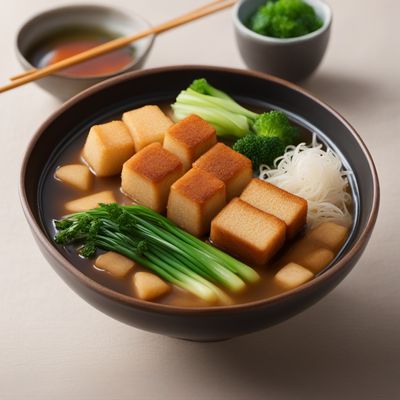
Ingredient
Rakkyo
The Sweet and Tangy Rakkyo
Rakkyo is a small, bulbous vegetable that belongs to the onion family. It has a crisp texture and a sweet, tangy flavor that is reminiscent of pickled onions. The bulbs are small and round, with a pinkish hue and a thin, papery skin. The flesh is white and tender. Its appearance is marked by its distinctive shape and vibrant color.
Origins and history
Rakkyo is native to China and is widely cultivated in various Asian countries, including Japan, Korea, and Thailand. It has been used in Asian cuisines for centuries and is particularly popular in pickled form. Rakkyo pickles are made by fermenting the bulbs in a mixture of vinegar, sugar, and spices, resulting in a sweet and tangy flavor. Rakkyo is also used in stir-fries, condiments, and as a garnish for various dishes.
Nutritional information
Rakkyo is low in calories and fat, making it a healthy addition to meals. It is also a good source of dietary fiber, vitamin C, and antioxidants. However, it should be consumed in moderation due to its high sodium content in pickled form.
Allergens
May cause allergic reactions in individuals with onion allergies.
How to select
When selecting rakkyo, look for bulbs that are firm and free from any soft spots or signs of decay. The skin should be smooth and unblemished. Avoid bulbs that have a strong, pungent odor or are discolored. If purchasing pickled rakkyo, choose products that are well-sealed and have a fresh aroma.
Storage recommendations
To maintain its freshness, store fresh rakkyo in the refrigerator at a temperature between 32°F and 38°F (0°C and 3°C). Pickled rakkyo should be stored in the refrigerator after opening. It can be kept for several weeks if properly sealed and refrigerated.
How to produce
Rakkyo can be grown in home gardens or containers. It requires well-drained soil and full sun to thrive. Plant the bulbs in early spring or fall, spacing them about 4-6 inches apart. Harvest the bulbs when they reach the desired size, usually after 90-120 days. Pickling rakkyo at home involves soaking the bulbs in a mixture of vinegar, sugar, and spices for several days to develop the desired flavor.
Preparation tips
Rakkyo can be used in a variety of ways, including pickling, stir-frying, and as a condiment. To pickle rakkyo, soak the bulbs in a mixture of vinegar, sugar, and spices for several days to develop the desired flavor. When stir-frying, cook the rakkyo briefly to retain its crisp texture. It can also be used as a garnish for salads, noodles, and rice dishes.
Culinary uses
Rakkyo is commonly used in Asian cuisines, particularly in pickles, stir-fries, and condiments. Its sweet and tangy flavor adds a unique twist to dishes and complements a wide range of ingredients. It is also enjoyed as a garnish for various Asian dishes.
Availability
Rakkyo is commonly available in Asian countries, including China, Japan, Korea, and Thailand.


